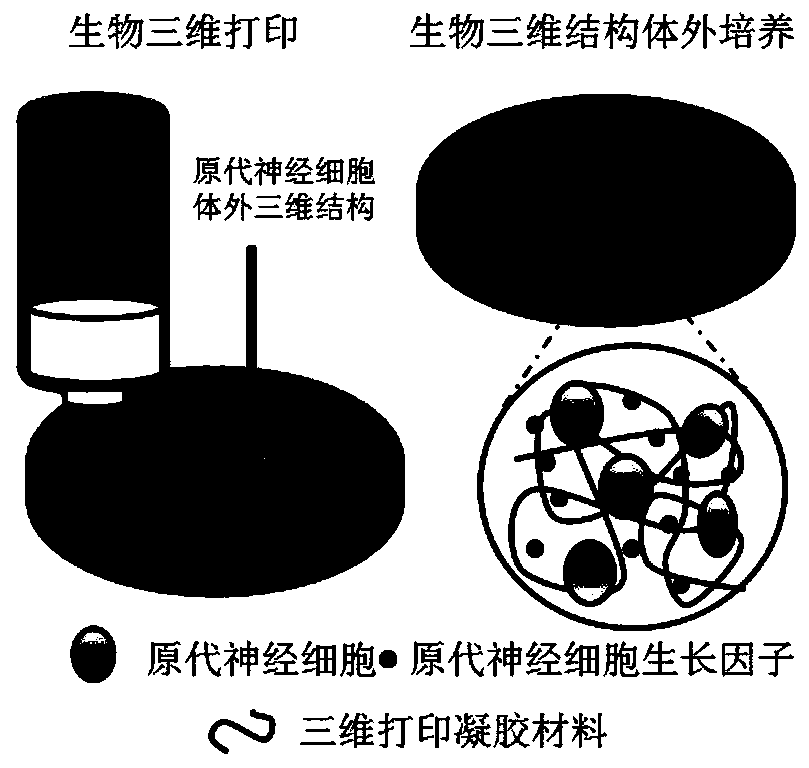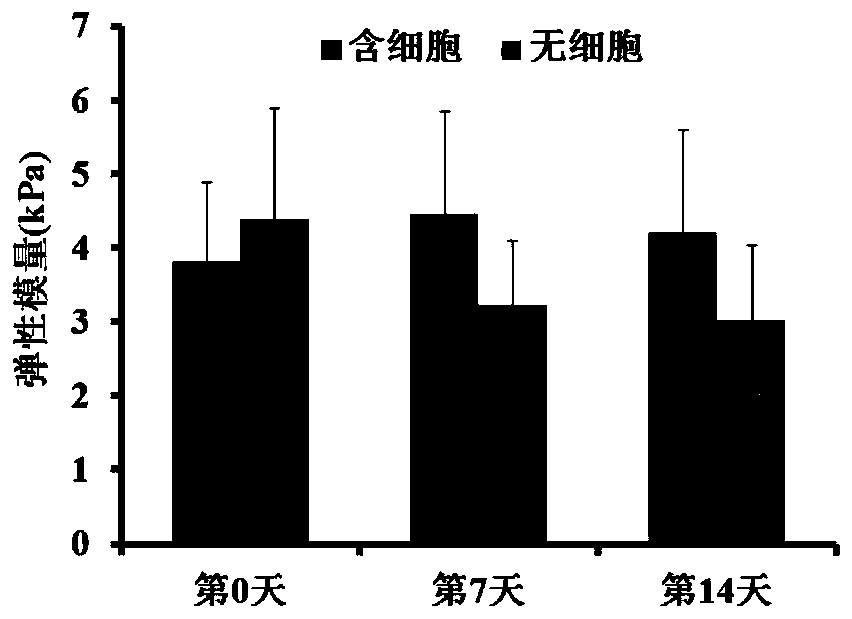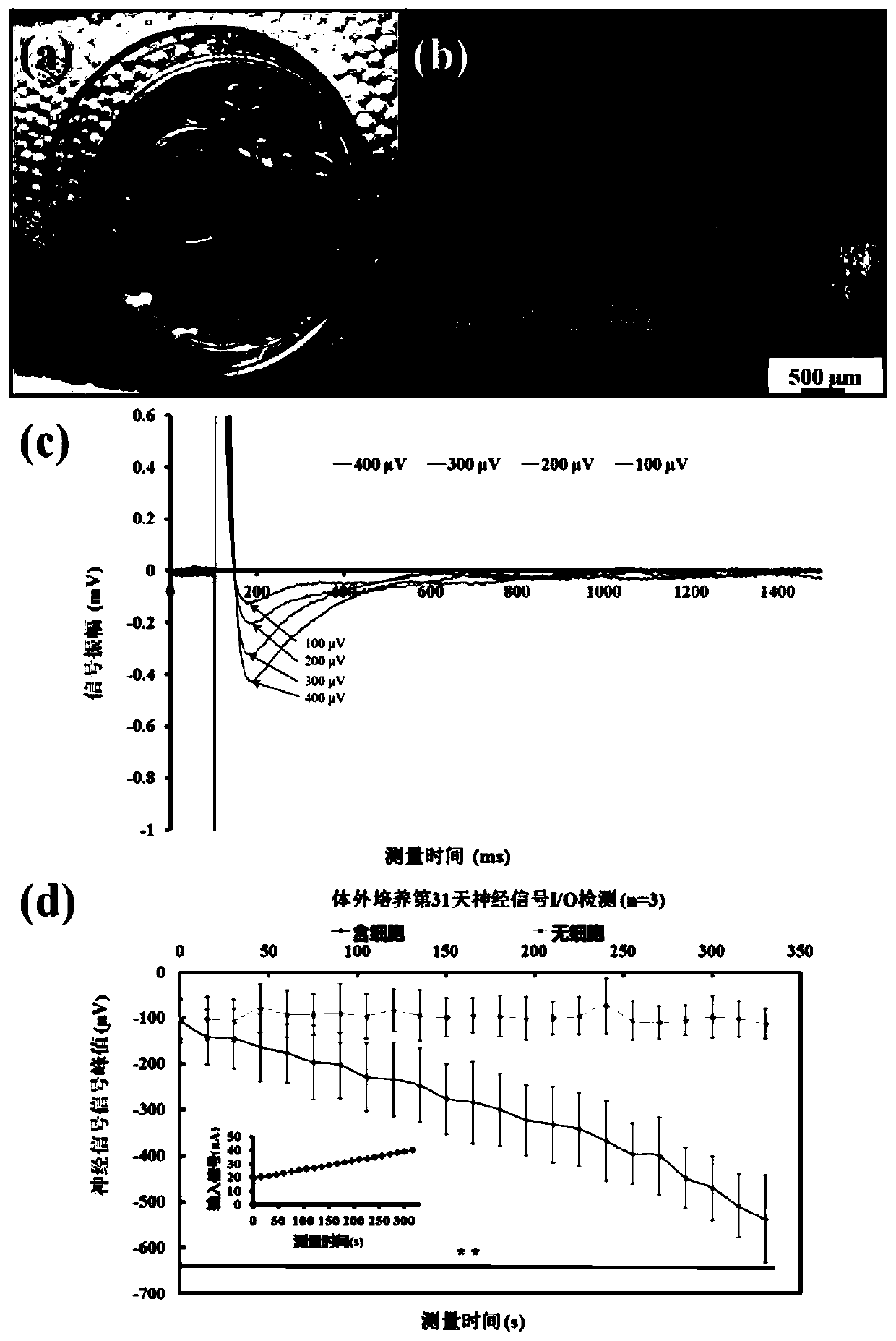Brain-like disease treatment tissue model based on cell three-dimensional printing technology and preparation method and application thereof
A technology for 3D printing and disease treatment, applied in biochemical equipment and methods, animal cells, tissue culture, etc., can solve problems such as brain-like tissue without breakthroughs
- Summary
- Abstract
- Description
- Claims
- Application Information
AI Technical Summary
Problems solved by technology
Method used
Image
Examples
Embodiment 1
[0061] as per figure 1 As shown in the process, the construction method of long-term in vitro cultured brain disease treatment tissue model based on biological three-dimensional printing includes the following steps:
[0062] (1) Design of in vitro brain-like tissue structure model:
[0063] Using the principle of bionics, based on the natural brain layered structure and structural mechanical properties, simulate the cerebral cortex with 1, 2, 3, 4, 5, 6 layers of layered structure in vitro brain-like tissue structure model, and maintain the brain-like tissue The elastic modulus of the model is 4.2kPa; the total concentration of primary neurons in each layer of cortical-like structure is 1×10 7 / mL; wherein, the concentration ratio of neurons and glial cells was 1:10.
[0064] (2) Anatomical extraction of primary nerve cells:
[0065] Primary nerve cells (including neurons and glial cells) were obtained by extracting the cerebral cortex tissue of Wistar suckling mice on the...
Embodiment 2
[0077] According to the steps in Example 1 (1)-(6) of the present invention, the in vitro three-layer epilepsy disease model is constructed (primary nerve cells (including neurons and glial cells) that are specifically used are passed through Wistar milk on the first day after birth. Rat cerebral cortex tissue was extracted. Then electrophysiological stimulation was used to construct epilepsy-like diseases.), and then the drug response characteristics of the model were tested by adding drugs with different molecular polarities.
[0078] (7-1) DNQX drug detection of relatively polar drug molecules;
[0079] Such as Figure 4The constructed brain tissue was cultured in the in vitro microenvironment of 4×4MED64 microarray electrode culture dish for 31 days. Electrophysiological studies of this brain-like structure allow the detection of excitatory post-spitting potentials (EPSPs). The neuroexcitatory inhibitor AMPA receptor antagonist (DNQX) was also directly added to the cultu...
Embodiment 3
[0081] According to the steps in Example 1 (1)-(6) of the present invention, the in vitro three-layer epilepsy disease model is constructed (primary nerve cells (including neurons and glial cells) that are specifically used are passed through Wistar milk on the first day after birth. Rat cerebral cortex tissue was extracted. Then electrophysiological stimulation was used to construct epilepsy-like diseases.), and then the drug response characteristics of the model were tested by adding drugs with different molecular polarities.
[0082] (7-2) TTX drug detection of less polar drug molecules;
[0083] Such as Figure 4 The constructed brain tissue was cultured in the in vitro microenvironment of 4×4MED64 microarray electrode culture dish for 31 days. Electrophysiological studies of this brain-like structure allow the detection of excitatory post-spitting potentials (EPSPs). Tetrodotoxin (TTX) was added to the culture environment. TTX blocks sodium ion channels, completely blo...
PUM
| Property | Measurement | Unit |
|---|---|---|
| elastic modulus | aaaaa | aaaaa |
| thickness | aaaaa | aaaaa |
| elastic modulus | aaaaa | aaaaa |
Abstract
Description
Claims
Application Information
 Login to View More
Login to View More - R&D
- Intellectual Property
- Life Sciences
- Materials
- Tech Scout
- Unparalleled Data Quality
- Higher Quality Content
- 60% Fewer Hallucinations
Browse by: Latest US Patents, China's latest patents, Technical Efficacy Thesaurus, Application Domain, Technology Topic, Popular Technical Reports.
© 2025 PatSnap. All rights reserved.Legal|Privacy policy|Modern Slavery Act Transparency Statement|Sitemap|About US| Contact US: help@patsnap.com



